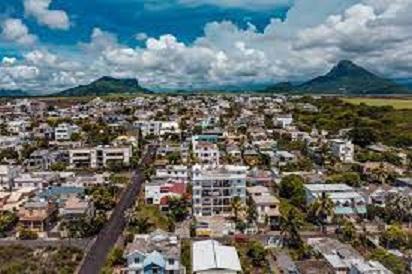Africa-Press – Mauritius. In 1961, the American economist James Meade predicted a gloomy future for the small island of Mauritius. For the 1977 Nobel Prize winner, “the outlook for peaceful development was poor.(Meade et al, 1961) Yet, between 1970 and 2000, the real gross domestic product (GDP) of Mauritius increased on average by 5.9% per year.
The GDP in 2000 was five and half times higher, in real terms, than in 1970. On the eve of its independence, Mauritius had a weak economy mainly based on sugar.
Indeed in 1967, sugar accounted for about a third of the gross national product at factor cost of Mauritius, for about a third of the total employment in the country and for nearly 92% of total export earnings (YeungLamKo, 1998).
And this was no coincidence as under British domination Mauritius was made a raw sugar provider. After independence, the Mauritian government, inspired by the Asian countries such as Taiwan and South Korea, chose to embark on an outward-looking strategy to diversify the economy and eventually sustain economic growth.
The first major step of this strategy was the creation in 1970 of the Export Processing Zone (EPZ) which was meant to attract foreign investors via financial, fiscal and legal incentives.
The EPZ allowed the opening of the Mauritian economy to foreign investors and imports without jeopardising local firms. There was an effective mix of nurturing protectionism and opening of the economy.
The second major step was taken in 1972, when the former British colony became a full member of the Yaoundé II Convention, under which the European Community (EC) provided commercial and financial aids to former African colonies of its Member States.
As a matter of fact, free access to the EC market was given to products made in Mauritius and abiding by the rules of origin. At that time, the country was still strongly dependent on its links with the UK and on the sugar industry.
Indeed, in 1972, the exports to the UK accounted for 59% of the total exports of Mauritius while the exports of sugar accounted for 90.6%. The third major step was taken in February 1975 with the signature of the Lomé I Convention which included the Sugar Protocol.
Faced with the dramatic increase of sugar price, the EC proposed, within the Lomé I Convention, “to import at guaranteed prices, specific quantities of cane sugar raw or white” from ACP countries (Lomé I Convention, Protocol 3, 1975).
“When the Sugar Protocol was negotiated and concluded.
. the world market price for sugar was more than three times higher” than the EC intervention price (EU, 2005). Despite the low price proposed by the EC and the reluctance of other sugar-producing ACP countries, Mauritius agreed upon the Sugar Protocol.
The Mauritian government, supported by experienced sugar producers, accepted the proposal despite the immediate loss in terms of revenue. Mauritius accepted, out of a quota of about 1.4 million metric tons, to provide 487,200 metric tons.
The aim was to ensure the existence of the sugar industry in the long run. Shortly after the agreement, the world market price for sugar knew a dramatic fall, getting finally lower than the guaranteed price given by the EC.
The decision of Mauritius eventually revealed to be a judicious one. Surpluses stemming from the sugar earnings were used to finance the economic diversification and projects having spill-over effects on the economy.
Sugar producers allocated the surpluses to the development of the tourism sector. Furthermore, sugar earnings were taxed by the State in order to finance the reinforcement of the country’s infrastructure and production capacity.
For the 1975-1980 period, the Mauritian government launched a vast investment programme in infrastructure such as bulk sugar terminal, harbour development, roads and hydro-electric plant amounting to some Rs 7.2 billion.
In the second half of the 1970s, the diversification strategy was starting to bear its fruits. In 1979, the number of tourists visiting Mauritius was 3.5 higher than in 1971.
The contribution to GDP of the EPZ sector was about 3.4% and the number of enterprises operating under the EPZ scheme was 10.5 times higher than in 1971. It is to be noted that the success of the EPZ was partly due to the ethnic diversity of Mauritius.
Indeed, the Chinese community played a significant role by attracting entrepreneurs from Hong Kong who were seeking overseas locations for their textile operations in order to avoid the textile quotas imposed on Hong Kong.
However, despite the relative success of the diversification strategy, the economic performance of the country slackened in the late 1970s due to internal and external factors.
Following the sugar-boom period in 1973-74, increases in wages and salaries were granted. Public expenditures increased significantly as the government decided to consolidate the Welfare State.
The latter also embarked on an expansionist monetary policy. It resulted in inflationary pressures which eventually undermined the competitiveness of the Mauritian products abroad. The international economic situation and other external factors did not help Mauritius.
The second oil crisis of 1979 resulting in a doubling of oil prices, import restriction on EPZ exports in 1976 by France and in 1979 by the UK, increasing competition from other EPZ in other less developed countries, and a relative decline in foreign investment did indeed worsen the situation of the country (YeungLamKo, 1998).
Owing to all these elements, the economic situation deteriorated dramatically in 1979. The country had foreign currency reserves amounting to only two weeks of imports and was almost in a bankrupt situation.
Besides, after the severe cyclone Gervaise in 1975, Mauritius was hit by four cyclones between December 1979 and March 1980; the most damaging one being Claudette.
Sugar cane crops were devastated and sugar earnings plummeted. At the beginning of 1980, the economic situation of the small island of Mauritius was gloomy.
For More News And Analysis About Mauritius Follow Africa-Press







